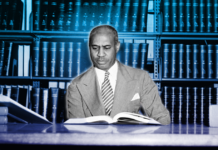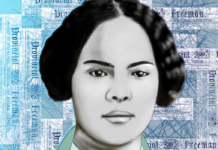They say it only takes one special teacher in a child’s life to make a lasting impact. I have spent my educational career striving to be THAT teacher who is always remembered fondly in the development of my students.
I have been teaching at the same school in the same grade level working with families in the same community for over a decade. When I get asked, “How can you stay in the same place so long?” or “Why don’t you teach in a more affluent area or even closer to home?” I always answer the same, because these are the children that need a teacher who is passionate, who is invested in their future, who loves them and will nurture them enough to open doors to a world they may otherwise never know.
My experiences as a student were like many I suppose; filled with a mixed bag of teachers whose influences still drive me today. My Kindergarten teacher made me feel like I was special and imaginative, my fourth-grade teacher built my love of reading and writing poetry and short stories, while my sixth, seventh, and eighth-grade teachers helped me to find my voice and encouraged me to be a strong-minded thinker and debater.
However, my second-grade teacher crushed my confidence in many ways and added to a complex of inadequacy where math is concerned that I carry with me still. That ideology handicapped me for so long, but now as an educator, I use it as fuel to make sure I never impart such feelings upon my students by trying to make math fun, exciting, and useful while always encouraging their efforts (even though I still kind of hate it).
Some of the teachers I encountered who had the greatest impact on my life though were after I got to college. I entered as an art major because I loved it and wasn’t quite sure what I wanted to do as a professional career. My art teachers helped me find myself again and my education professors opened the door to my passions.
When I got to the University of Lafayette, my culture and diversity professor said something I’ll never forget. He said that this class was going to be the most important class we would take on the journey to our certification and degrees. It wouldn’t be how to write a lesson plan, or how to research and apply different teaching philosophies, because children will not respect or listen to someone who doesn’t care to know them and meet them on their path while being able to identify with their struggle and make a real connection.
Then, he asked his class of 90% females and completely mixed ethnicities, to reflect on their own experience with the diversity of their educators. “How many of your teachers have been male or teachers of color?” he said. “How many have been both?” I realized at that moment as he spoke that he was only one of two I’d ever had. Most of the teachers who’d encouraged and influenced me along the way had been Caucasian women. They took the time, however, to know me and make that real connection.
I grew up in the ’80s in an upper middle class family and attended a private religious school from preschool to the eighth grade and was often the only child of color in my classroom, which I definitely noticed. I also noticed when I was hired at my elementary school in 2008, by a Caucasian female principal on to a mostly older female Caucasian staff servicing a large male population of students that were 99% Black and Hispanic from lower-income families, the obvious unbalance and how it may be feeding a disconnect and adding to a culture of complacency and animosity on both sides.
I watched the only two younger male teachers there become magnets to these young boys craving male influence and direction with compassion. I also watched the complacent educators and administrators be replaced over the years with a much more diverse group of teachers and staff who wanted to bond, learn new strategies, build bridges with the family and community in order to educate the whole child and turn a failing school into a “B” school. The rating is neither here nor there in regards to what really changed within those walls. Students and teachers went from individuals trying to pass time and get through the days, to arriving with purpose, working together, forming relationships that last year, throughout our growth and development, and matter enough to each other to invest in making a real impact and difference.
Every day, my principal now reminds us (man, woman, Black, White, Hispanic, or Asian) to begin the day with our “why” at the forefront of our thoughts and actions. Our “why” is our purpose. We don’t do this job for the pay. There’d never be enough we could earn, but the gift we give and receive in trying the best we can to be the change for these families and ourselves is truly priceless.
Diversity matters in the model of what our young people see, because it shows a future with options they may otherwise never know. It allows them to see past their neighborhoods or circumstances, which many of them never travel too far from. It is our charge to introduce them to this world of diversity, options, and cultures through pictures, texts, and by being those diverse and cultured individuals ourselves.
Sometimes it’s a matter of representation and sometimes it’s just a matter of educating ourselves to the population and community we serve, connecting as people in this world in order to make the most difference for the greater good. Any way you slice it, understanding the importance of diversity and culture for our students is indeed the most important thing as an educator as we continue to remain an ever-evolving student of ourselves.










